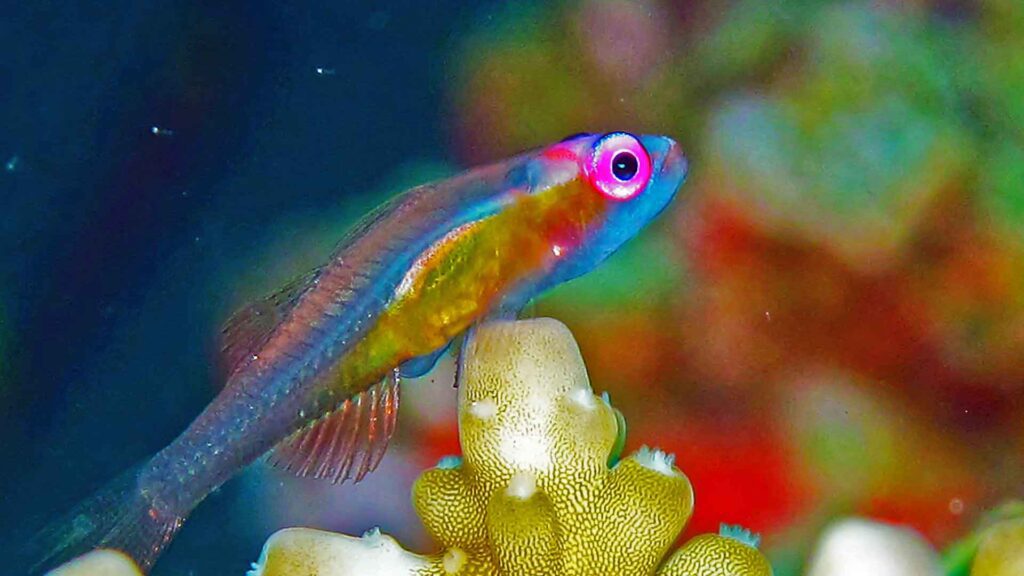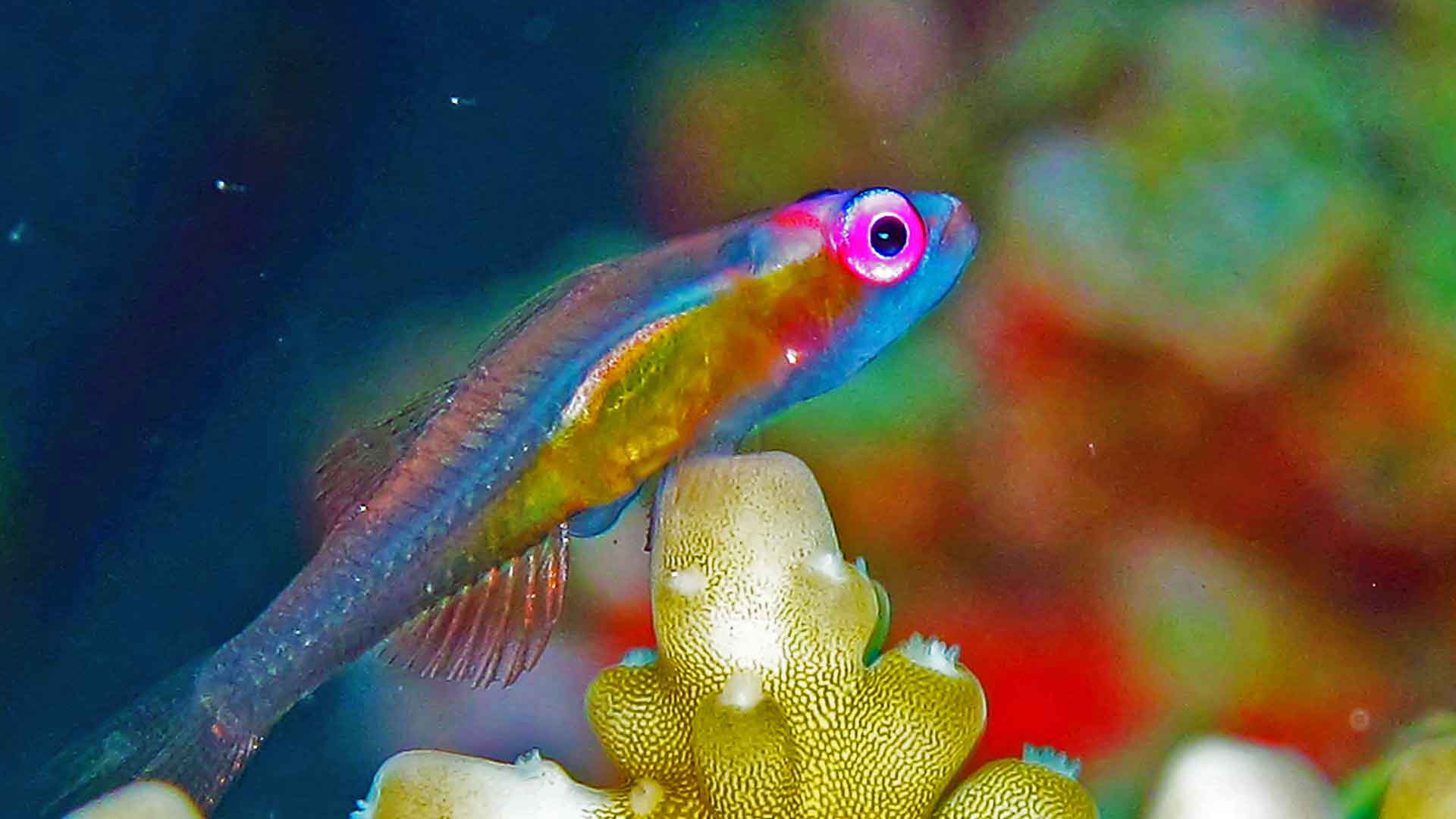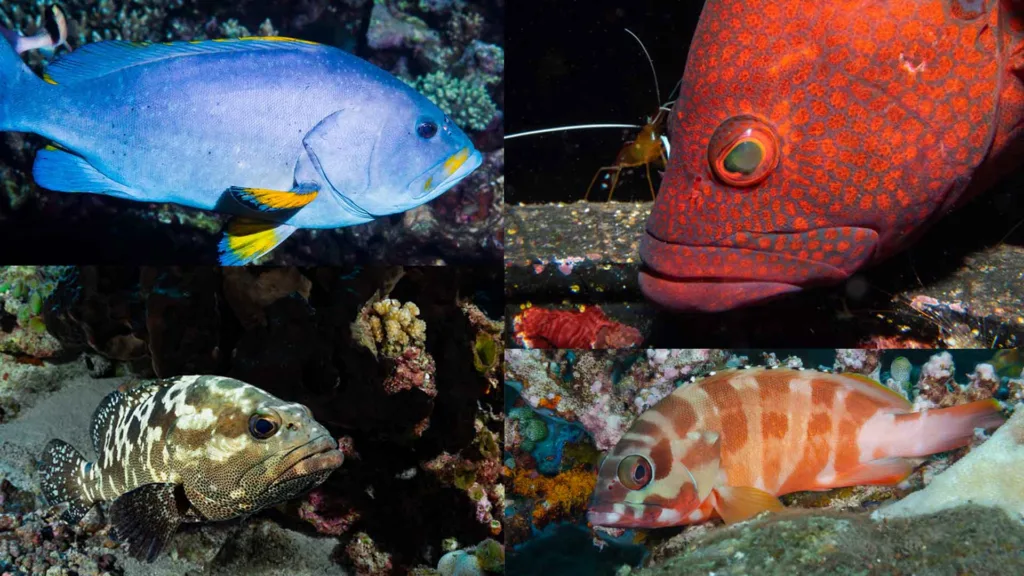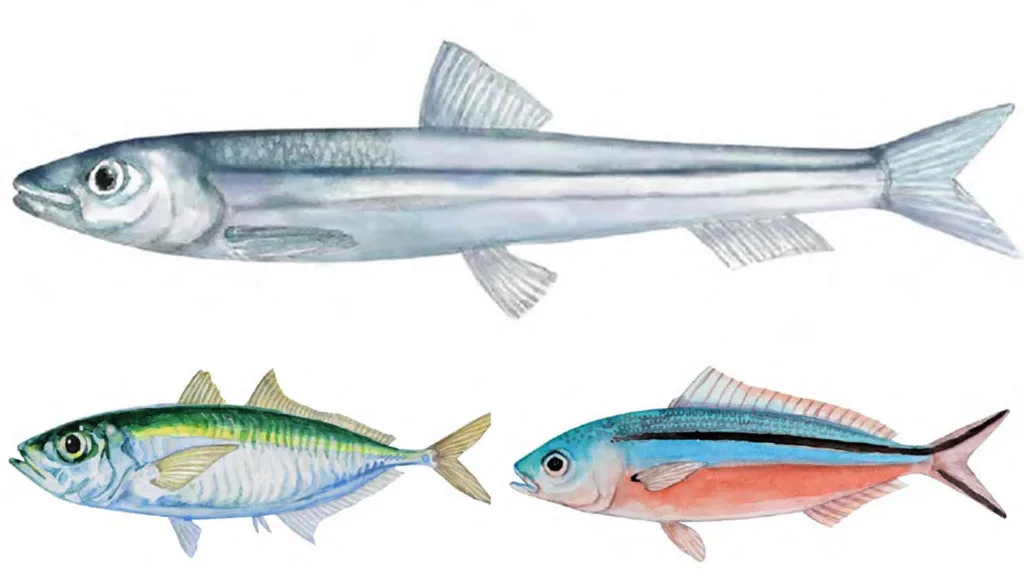
This group is the largest in the family, but it also includes the smallest species, many of which are currently hiding in caves and reefs. These are the more colourful gobies, with a distinct colouration that helps identify the species.
Many of the small species are new to science and have not yet been named, and more discoveries are expected, particularly in places like the Maldives, where vast areas remain unexplored. Some of the small species can be found swimming freely over coral or in caves, and they are typically planktivores. They feed on zooplankton and various small invertebrates.
Sea whip goby (Bryaninops yongei)
The sea whip goby lives mainly on sea whips in the genus Cirrhipathes and commonly occurs in pairs. Sometimes there are juveniles on the same whip. Parents protect the eggs, which are laid in a cleared area. The Indo-Pacific region is widespread. The length measures 40 mm.
This whip goby’s body is transparent. However, there are reddish-brown bars down its body. This appearance allows them to camouflage themselves, delaying the effect of the coral to which they are attached. They typically live in high-current areas. So it is interesting to learn how they survive here. Well, their pelvic fins are suckers. These are appendages that extend from the underside of their bodies. This unique feature allows them to cling to the coral.
This fish has one more intriguing physical characteristic. To remain silent and evade predators, their gills are formed on the underside, making this movement undetectable to a predator. Whip gobies are difficult to spot because of their small size and tendency to dart away when a predator or diver approaches. And they appear to have blended into the background.
In deeper waters with strong currents, whip corals are home to them. In some cases, however, they can be found at shallow depths, such as on corals grown on wrecks. Single juveniles are typically found on shorter corals, whereas larger and longer corals may contain pairs.




